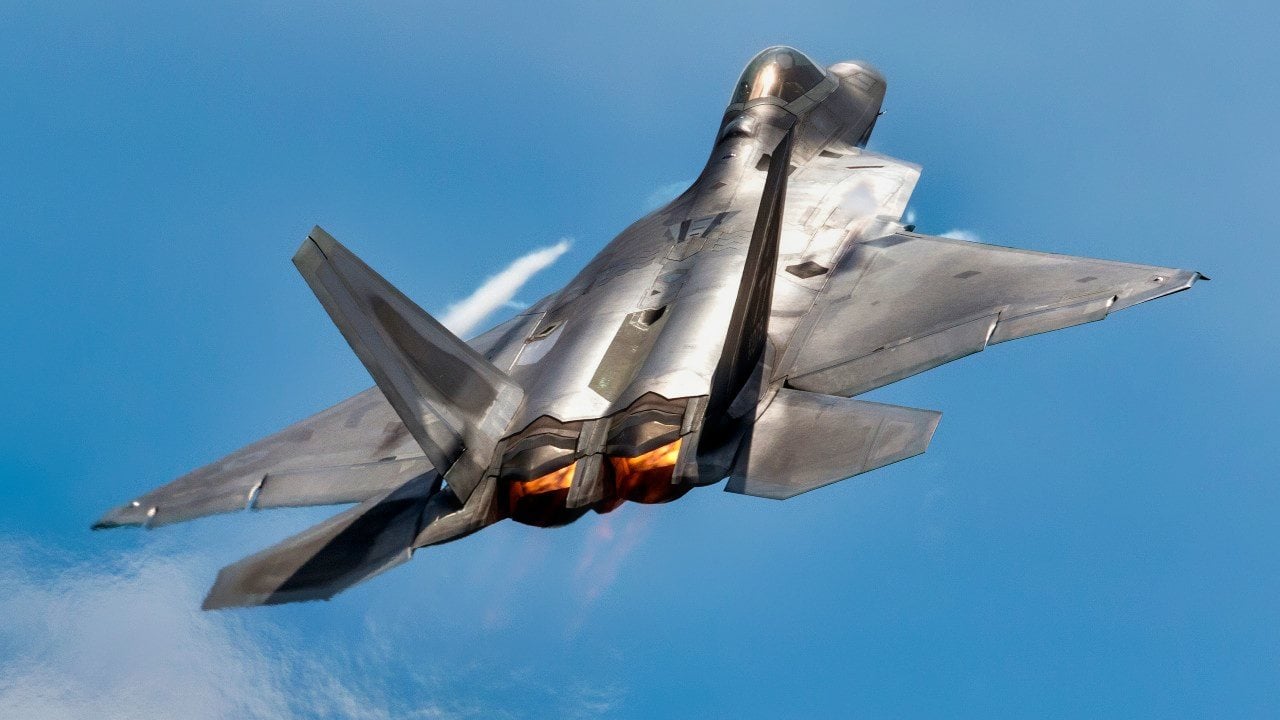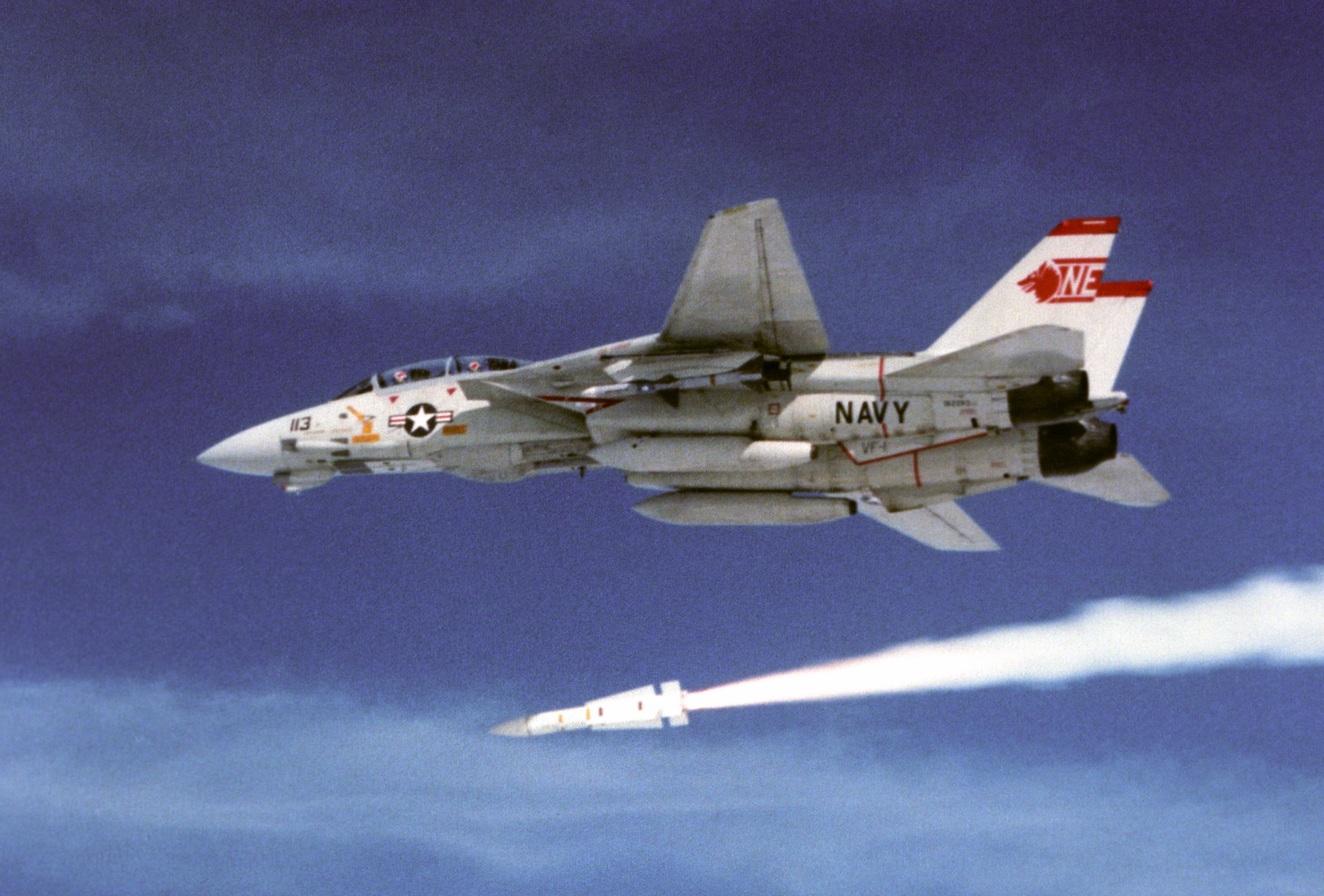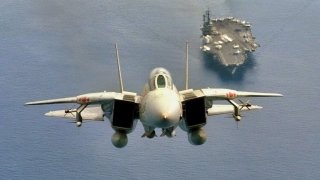The F-14 Tomcat Question The Navy Doesn't Want to Ask
The F-22 Raptor, known for its speed and advanced capabilities, wasn't the first U.S. fighter to achieve Mach 2.0; the F-14 Tomcat, introduced decades earlier, could reach Mach 2.3. Some experts say the U.S. Navy retired the F-14 too early, a question that might be shocking in some defense circles.
The Question—Was the F-14 Tomcat Retired Too Early? The F-22 Raptor, known for its speed and advanced capabilities, wasn't the first U.S. fighter to achieve Mach 2.0; the F-14 Tomcat, introduced decades earlier, could reach Mach 2.3. Some experts say the U.S. Navy retired the F-14 too early, a question that might be shocking in some defense circles.

-Developed in response to the need for a long-range, high-endurance interceptor, the F-14 became a formidable asset for the U.S. Navy with its advanced radar, long-range missiles, and countermeasures.
-However, high maintenance costs led to its retirement in 2006. As the Air Force considers retiring the F-22, some suggest lessons could be learned from the early retirement of the Tomcat.
The F-14 Tomcat Debate
The F-22 Raptor is arguably the most recognizable fighter platform to ever take to the skies. As the first ever fifth-generation jet to enter service with any military, the American-made fighter hosts an array of formidable capabilities. Perhaps the most significant attribute the Raptor possesses is speed.
The F-22 can reach Mach-2.0+ with afterburners in flight. Comparably, the newer F-35 Lightening II can only reach speeds of around Mach-1.6. Obviously, the Raptors speed makes it a top asset for the Air Force. However, this jet was actually not the first to be able to fly at Mach-2.0.
The F-14 Tomcat, introduced decades earlier, could hit nearly unprecedented speeds of Mach-2.3, making it just as fast as its Raptor successor.

Introducing the F-14 Tomcat
Following the Second World War, the U.S. Navy began prioritizing the development of a long-range, high-endurance interceptor better equipped to support carrier battle groups against Soviet threats. Beginning in the 1950s, the service established the Fleet Air Defense aircraft concept, which consisted of models with longer-range missiles than the existing F-4 Phantom II. Ultimately, this idea would result in the creation of the Douglas F6D Missileer project. However, the Navy’s extensive requirements were still not being met with this airframe.
Around this time, then-Secretary of Defense Robert McNamara proposed developing a versatile aircraft that could jointly serve the needs of both the Navy and Air Force. The Tactical Fighter Experimental (TFX) program was created, tasked with developing an airframe that was fast, able to fly longer rangers and carry heavier weapons, and would primarily be used as a fighter-bomber. The Navy opposed the F-111B airframe that was created by the TFX since the service felt that the Air Force’s desire for a low-level attack airframe would negatively impact its performance as a fighter.
By the mid-1960s, the Navy awarded manufacturer Northrop Grumman the contract to begin researching potential future fighter designs. Eventually, the Tomcat was born. Featuring the ability to carry long-range AWG-9 radar in addition to super-long-range AIM-54 Phoenix missiles on top of other design enhancements, the F-14 was truly a step up from its predecessors. The Tomcat also sported eight hardpoints for carrying ordnance and a General Electric Vulcan M61A-1mm gun with 675 rounds of ammunition. In terms of countermeasures, the Tomcat is equipped with the BAE Systems Integrated Defense Solutions and Lockheed Martin AN/ALE-39 chaff, flare, and decoy dispensers. As detailed by Airforce Technology, the fighter also hosts a Raytheon radar warning system and BAES Systems Information and Electronic Warfare Systems jammer.
What Made the F-14 Tomcat so Formidable?
While this fighter was a very formidable platform at the time of its introduction to service, following the collapse of the Soviet Union, the U.S. could no longer justify the platform’s high maintenance costs.
As explained by Popular Mechanics, with the absence of a “high-tech” adversarial air force, there just wasn’t as pressing of a need for the F-14 in the post-Cold War space. Perhaps the greatest argument that led to the Tomcat’s retirement was that it required between 30-60 hours of maintenance for every hour it spent in the air. Despite this hefty price, the Navy ultimately repurposed many of its Tomcats in the late 1990s with the new LANTIRN system. In 2006, the platform was fully relegated to retirement.

When the F-14s were decommissioned, carriers were left without a high-speed air-to-air platform. Although the F/A-18 Hornet arrived about a decade after the Tomcats, the latter platform has undergone a series of modernization efforts to retain its viability in the modern day. In fact, with the continual installation of computing, weapons systems, mission systems, software, and sensor updates, the F/A-18 Block III Super Hornet continues to be produced and flown today. If the Tomcat received similar treatment back in the day, perhaps the fighter's service life could have been extended.
What the F-14 Can Teach the F-22
The Air Force is currently trying to retire the majority of its remaining Raptor fleet to make budgetary room for additional F-35s and the incoming Next-Generation Air Dominance (NGAD) program. Many analysts have opposed this notion, considering the F-22 can still outpace the F-35 and would be an asset if war does erupt between Washington and Beijing down the line.
Maybe the service should consider the ramifications of retiring the Tomcat too early when pushing the rest of its F-22 fighters out of service.
About the Author: Maya Carlin
Maya Carlin is an analyst with the Center for Security Policy and a former Anna Sobol Levy Fellow at IDC Herzliya in Israel. She has by-lines in many publications, including The National Interest, Jerusalem Post, and Times of Israel. You can follow her on Twitter: @MayaCarlin.
Image Credit: Creative Commons.


